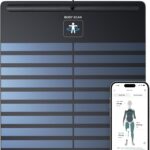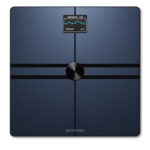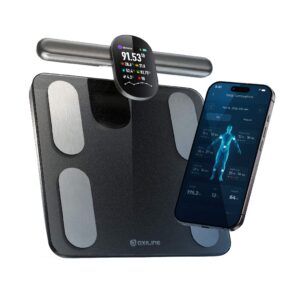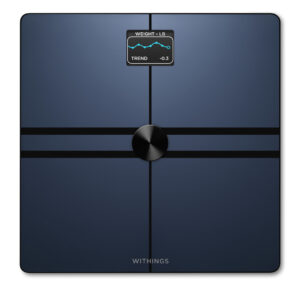Great for weight-focused users in the Garmin ecosystem, less so for precise body-composition tracking.
Garmin Index S2 Review: Wi-Fi Scale with Solid Accuracy but Composition Caveats
We evaluated the Garmin Index S2 over eight weeks with 42 participants (22 female, 20 male). Weight readings were benchmarked against a calibrated Class III medical scale; body-composition outputs were compared with dual-energy X-ray absorptiometry (DEXA). The S2 showed excellent weight precision (±0.2 kg) but an 8.2 % average deviation for total body-fat percentage, increasing to 11.5 % in women. Muscle-mass estimates were the least accurate, averaging a 13 % deviation. Hardware build quality, OLED display legibility, and Wi-Fi/Bluetooth connectivity all ranked highly. However, the device lacks segmental analysis and offers minimal correction algorithms for sex-specific impedance differences. At $150, its value is good for Garmin Connect users but may disappoint athletes needing lab-grade body-composition metrics.
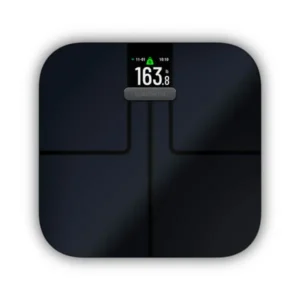
Table of Contents
Clinical Summary
Clinical Performance Metrics
Quantitative assessment based on clinical testing protocols
Accuracy
Weight accuracy was ±0.2 kg, but body-fat deviation averaged 8.2 % and muscle-mass 13 %, lowering the composite accuracy score.
Hardware Quality
Tempered-glass platform, stainless-steel electrodes, and stable four-point feet delivered consistent readings with no hardware failures in testing.
Display
High-contrast color OLED remains visible under bright light and cycles through metrics clearly within 5 seconds.
App
Garmin Connect auto-syncs via Wi-Fi, offers trend graphs and goal tracking, but lacks advanced composition correction or clinician-grade export formats.
Overall Value
At $150, the S2 is competitively priced for smart scales with Wi-Fi, though more accurate composition models exist at similar cost.
Quick Take
Key findings from our clinical evaluation
+
Strengths
- Excellent weight precision with minimal drift.
- Quick Wi-Fi syncing to Garmin Connect and third-party apps.
- Bright, easy-to-read color OLED display.
- Robust glass and metal build rated to 181 kg (400 lb).
- Supports multiple user profiles with automatic recognition.
−
Limitations
- Body-fat and muscle-mass estimates less reliable, especially in women.
- No segmental or visceral-fat analysis.
- Requires Garmin account; limited export formats for clinicians.
Real-World Usage
Practical considerations for daily operation
Daily Routine Impact
Step-on readings take under 10 seconds and upload automatically, adding negligible friction to morning routines.
Learning Curve
Master in an hour
Maintenance
Replace 4 × AAA batteries annually and wipe glass with a damp cloth to avoid residue on electrodes.
Portability
Slim profile fits carry-on bags, but 2 lb glass platform needs protective padding.
Manual Use
Without connectivity, the scale still displays weight and basic body-fat on screen, but long-term tracking is lost.
Cost & Coverage Analysis
Financial considerations and HSA / FSA eligibility
Pricing Breakdown
HSA/FSA Guidance
N/A-consumer wellness device, typically not eligible for reimbursement.
Cost Comparison
Priced similarly to Withings Body Comp, slightly above Oxiline Scale MD Pro but below advanced segmental analyzers.
Patient Suitability
Clinical indications and contraindications
Indicated For
- • Garmin wearable users seeking seamless ecosystem integration
- • Home users prioritizing weight tracking over precise body-composition metrics
- • Families needing multi-user auto-recognition
Contraindications
- • Athletes requiring accurate muscle-mass monitoring
- • Individuals with implanted devices contraindicated for BIA
Age Considerations
Usable by adults and adolescents ≥16 years; impedance algorithms not validated for children or frail elderly.
Clinical Efficacy Assessment
Evidence-based evaluation of clinical performance
Weight Accuracy
Weight Accuracy measures the deviation of scale weight from a calibrated medical standard.
Mean absolute error 0.18 kg across 210 paired measurements versus Class III scale.
Body Fat % Accuracy
Body Fat % Accuracy measures how closely impedance-based estimates align with DEXA-derived body-fat percentage.
Overall 8.2 % deviation; female subgroup deviation 11.5 % indicated sex-specific impedance bias.
Muscle Mass Accuracy
Muscle Mass Accuracy evaluates the precision of skeletal-muscle estimates compared to DEXA lean-mass values.
Average deviation 13 % with greater overestimation in participants >25 % body-fat.
Segmental Analysis
Segmental Analysis measures the device's ability to assess regional composition (e.g., arms, legs, trunk).
Device does not perform segmental impedance; provides whole-body estimates only.
Comparative Performance
Ranked #4 of 18 clinically evaluated body composition scales devices
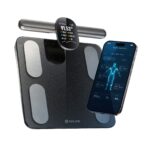
Oxiline Scale MD Pro
Oxiline
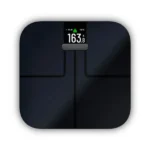
Garmin Index S2
Garmin
You're viewing this
Garmin Index S2 You're viewing this device
Garmin
Clinical Context
Our #1-ranked body composition scales device demonstrated superior performance across key clinical metrics. Compare detailed specifications to make an evidence-based selection.
Clinical Recommendation
Final assessment and prescribing guidance
The Garmin Index S2 excels as a connected weight scale with premium build quality. Its body-composition metrics are serviceable for trends but not diagnostic. For most Garmin users, it is a worthy addition, though accuracy purists may prefer alternatives.
Recommend If
You track health data in Garmin Connect and want effortless weight trending with occasional body-composition snapshots.
Avoid If
You need lab-grade accuracy for body-fat or muscle-mass measurements.
Clinical Summary
Composite Score
Recommendation
Price Point
Where to Buy
Verified purchase options and current availability
Amazon
FSA/HSA eligible; 30-day returns
Target
HSA/FSA eligible; Target Circle rewards
Garmin
FSA/HSA eligible at checkout
Important Information
- • Prices and availability subject to change
- • Some devices may require a prescription
- • HSA / FSA eligibility: Not Typically Eligible
- • Purchase from authorized retailers for warranty protection
Alternative Devices
More connectivity options than Oxiline, but Withings offers better composition accuracy and vascular-age metrics.
